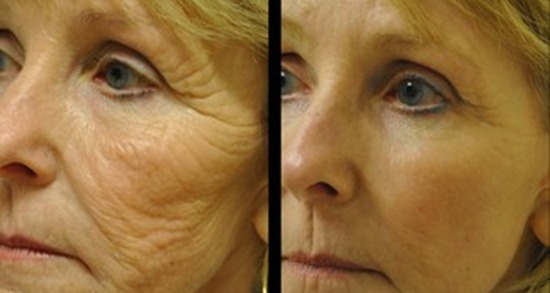The non-surgical facelift is a laser procedure designed to smooth and firm the skin, providing a fresh, youthful appearance. Throughout one’s life, the sun’s radiation, stress, gravity, and other factors combine to cause the skin to sag and fit more loosely. Areas of the face and neck, in particular around the jawline, are especially prone to the aging process. Though these changes are gradual, wrinkles and other signs of aging can make individuals “feel older” than they really are. At Laser Aesthetics of Colorado, we strive to provide each of our Centennial non-surgical facelift patients with results that make them feel years younger, without the drawbacks associated with a surgical procedure.
Candidates for Non-Surgical Facelift
- Patients with mild to moderate loose skin on their face that is resistant to other skin tightening methods
- Patients with skin laxity, possibly resulting from another procedure
- Patients seeking a facial rejuvenation but unable to undergo an extensive, surgical procedure
About Non-Surgical Facelift
Non-surgical facelift treatments are specifically tailored to each patient based on the patient and their desired result. The resulting treatment plan can include any number of specific treatments to achieve the best possible result. Generally, non-surgical facelifts are accomplished without causing much, if any pain or discomfort, and no downtime is required. Centennial non-surgical facelift patients are able to experience truly rejuvenation results without the associated drawbacks necessary when going through a surgical procedure. Most patients require follow-up treatments to achieve the desired result, but these treatments are discussed during the consultation phase so there’s no surprises. Negative side effects of non-surgical facelifts are temporary and will vary depending on the specific treatments used.
How Non-Surgical Facelift is Performed
Non-surgical facelifts are performed using one or a combination of three different non-surgical techniques, including radiofrequency, intense pulsed light (IPL) and ultrasound. During radiofrequency treatment, a small device is pressed on the skin that emits radio frequency energy deep into the skin tissue to stimulate collagen production. During this treatment patients feel a gentle vibration and alternating cooling and heating sensations. During IPL treatments, a handheld device targets the deeper layers of skin with infrared light. The light quickly heats the targeted area and treatment may require more than one pass to achieve the desired result. For ultrasound treatment, an imaging device is placed over the skin that gives the operator an image of the tissue beneath the skin. The operator uses this information to direct the ultrasound bursts to target specific areas beneath the skin surface.
Results:

